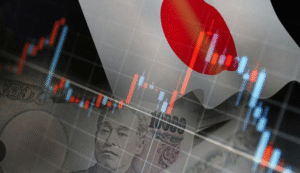$FXI $BABA $MCHI
#ChinaEconomy #Manufacturing #PMI #Stimulus #EconomicGrowth #SupplyChain #GlobalMarkets #ChinaPMI #Investing #EmergingMarkets #FactoryGrowth #MonetaryPolicy
China’s manufacturing sector showed promising signs of recovery in November, as reflected in the Caixin Manufacturing Purchasing Managers’ Index (PMI), which surged to its highest level in five months. The PMI, a closely monitored indicator of economic health in the manufacturing sector, rose above forecasts to land at 50.7, marking an expansion (above 50) and underscoring the positive momentum seen across the industry. This rebound suggests that the barrage of stimulus measures rolled out by Beijing earlier this year is beginning to yield tangible results, fueling optimism about the country’s longer-term growth trajectory. Investors and businesses alike are closely watching such improvements as they point to a stabilization of one of the world’s largest economies, a critical driver of global trade and demand for commodities.
One of the standout findings was the rapid increase in incoming new orders, which rose at the sharpest pace in over three years. This uptick signals returning demand both domestically and internationally, providing evidence of improving consumer and industrial confidence. Analysts believe this rapid recovery in demand is partially tied to targeted fiscal and monetary measures, including tax breaks, infrastructure investments, and rate cuts, implemented to cushion the blows of a prolonged economic slowdown. Furthermore, an easing in the energy supply crunch and improved supply chain logistics has played a role in supporting factory activity. The development could boost companies with significant exposure to China’s industrial sector such as Alibaba ($BABA) or those included in ETFs like $FXI and $MCHI, as investor confidence in their revenue prospects is likely to strengthen.
However, this growth is not without its caveats. Rising geopolitical tensions and weakening global trade conditions remain significant headwinds that may cap some of the upside potential for Chinese manufacturers. Additionally, concerns persist about the sustainability of consumer demand, given weaker wage growth domestically and ongoing uncertainties around household debt. While officials have been proactive in addressing structural economic issues, market participants remain on edge regarding the depth and longevity of these economic measures. Despite the November pickup, a sustained recovery will require further domestic and international stability, as well as consistent policy support. For now, Beijing’s recent measures appear to have successfully managed risks without igniting the inflationary pressures often associated with such stimulus efforts, a balancing act closely watched by economists.
Global markets responded to the uptick in China’s PMI with mixed reactions. Asian equities moved higher during the trading day, as stronger-than-expected factory data provided a fresh boost to sentiment. Commodities like copper and steel—closely linked to manufacturing—also saw moderate price increases, reflecting improved outlooks for industrial demand. Yet, major Western markets, which are more concerned about tightening monetary policies and recession fears, showed limited reaction to the news. In the cryptocurrency space, the prospect of accelerating factory growth in China has long-term relevance for blockchain supply chain projects, though these remain speculative and relatively uncorrelated to immediate macroeconomic shifts. Overall, the improved manufacturing activity highlights China’s pivotal role in shaping broader economic trends and offers investors a reason to monitor unfolding developments in the region.











Comments are closed.